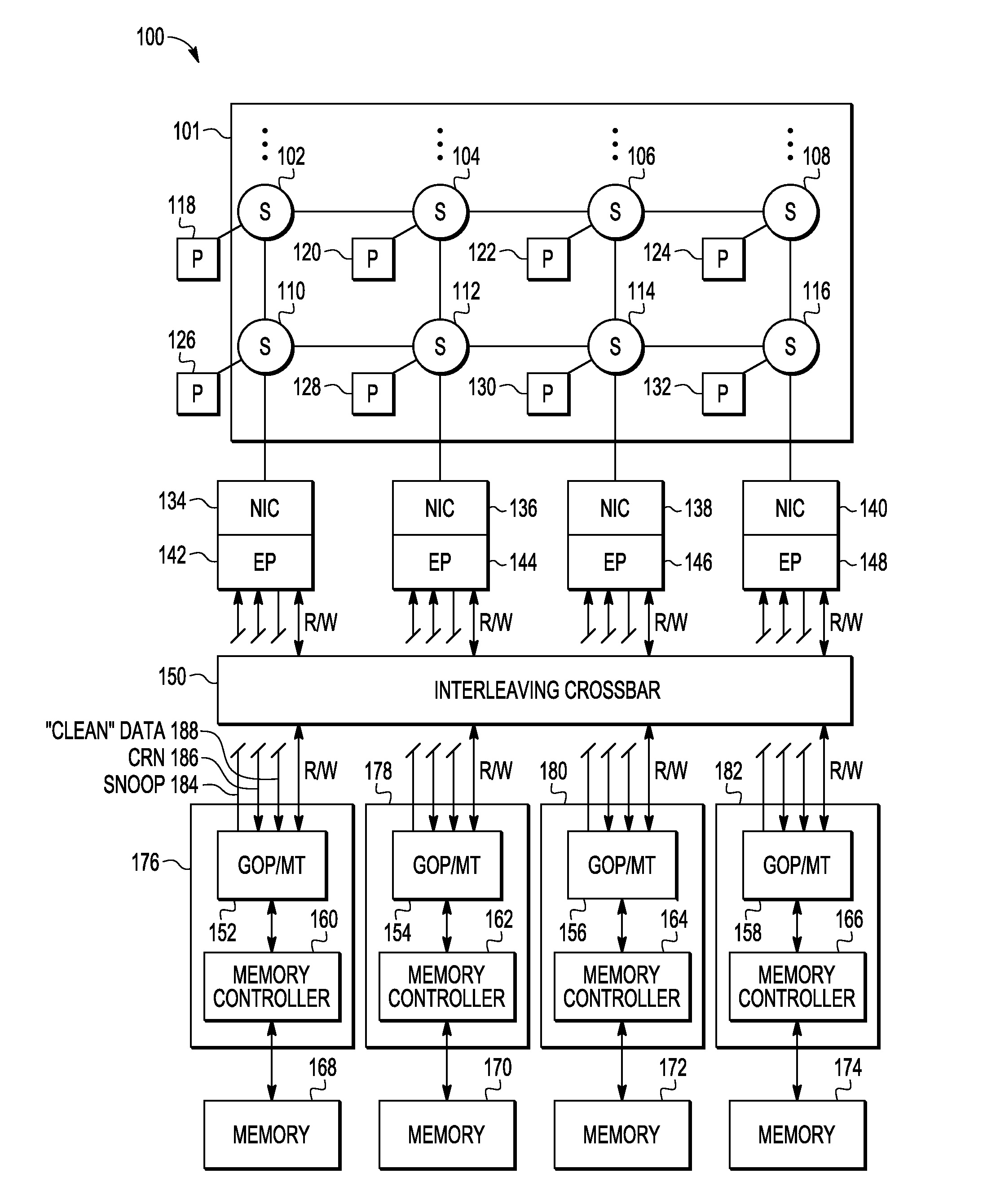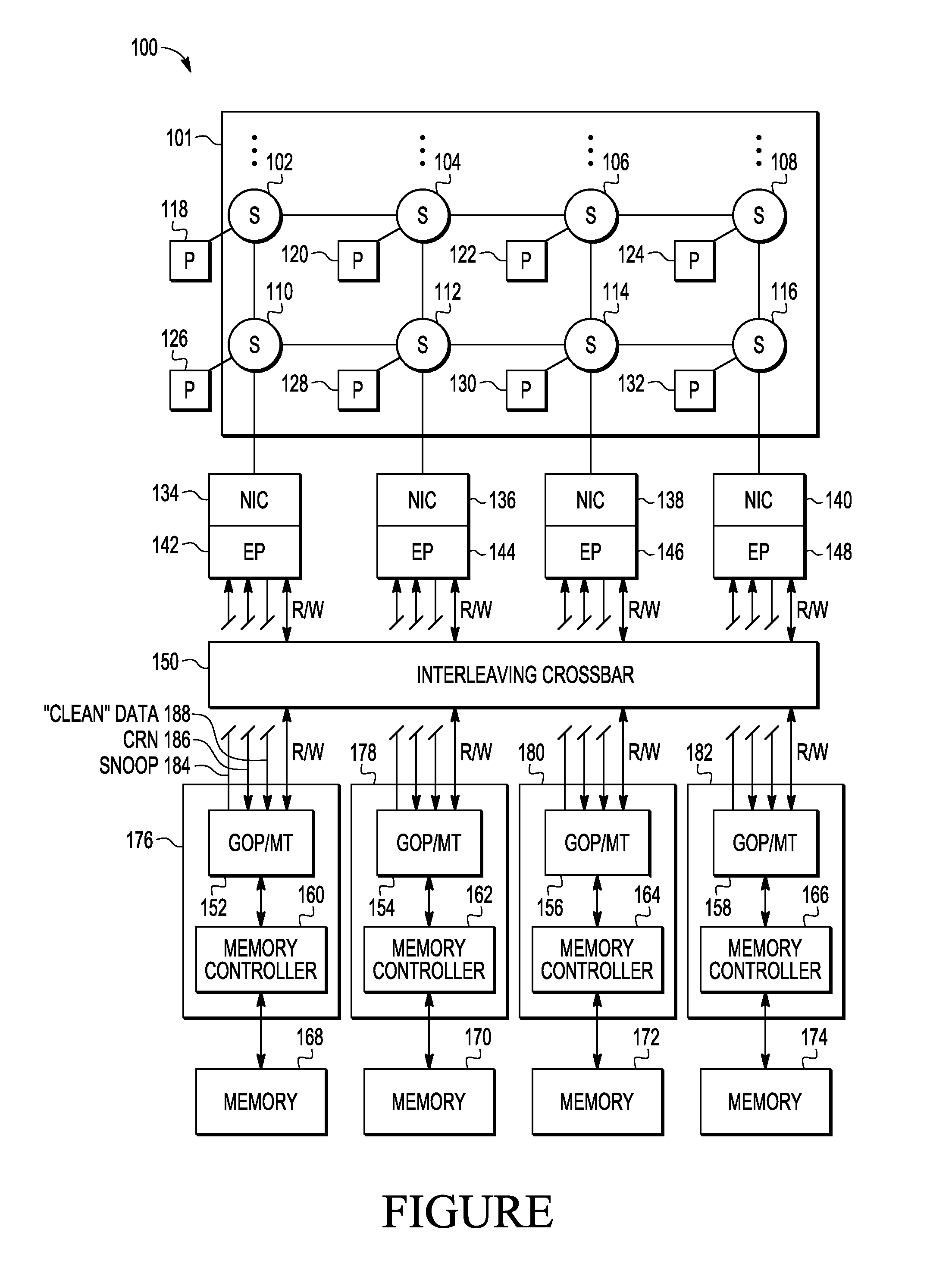Coherent memory interleaving with uniform latency
a memory and latency technology, applied in the field of coherent memory interleaving with uniform latency, can solve the problems of large path-length inequality, non-uniform times, and loss of intended benefits
- Summary
- Abstract
- Description
- Claims
- Application Information
AI Technical Summary
Benefits of technology
Problems solved by technology
Method used
Image
Examples
Embodiment Construction
[0009]Embodiments disclosed herein that provide equal access times to different memory devices without significantly impacting latencies. Interleaving among multiple memory controllers or channels is achieved while maintaining coherency and uniform latencies to the interleaved memory devices using system topologies that nominally do not offer uniform memory access pathways.
[0010]The FIGURE is a schematic diagram of a processing network 100 according to an embodiment of the present invention that includes a network 101, such as a mesh network or other suitable network) of switch points 102-116 arranged in a two-dimensional grid or array pattern. Each switch point 102-116 is coupled to communicate with the other switch points 102-116, either directly or indirectly, using a communication protocol such as the International Standards Organization's (ISO) Transmission Control Protocol (TCP) or other suitable protocol that specifies how data should be packetized, addressed, transmitted, ro...
PUM
 Login to View More
Login to View More Abstract
Description
Claims
Application Information
 Login to View More
Login to View More - R&D
- Intellectual Property
- Life Sciences
- Materials
- Tech Scout
- Unparalleled Data Quality
- Higher Quality Content
- 60% Fewer Hallucinations
Browse by: Latest US Patents, China's latest patents, Technical Efficacy Thesaurus, Application Domain, Technology Topic, Popular Technical Reports.
© 2025 PatSnap. All rights reserved.Legal|Privacy policy|Modern Slavery Act Transparency Statement|Sitemap|About US| Contact US: help@patsnap.com


